|
One question I get every year, usually just after Christmas, is do I think that the Christmas hampers available on the lay-by system are worth the money? And every year my answer is an emphatic no. Because when you break them down, they cost a lot more than the same items would if you were to source them yourself. When you MOO your Christmas hampers you choose what goes into it (you're not stuck with foods you don't like and will never use). You also get to choose when to buy those things (if you're smart you started with the non-perishables earlier in the year and bought them on half-price sale or even better, on clearance). And you choose how much of each thing to put into your hamper. Cheapskaters have their own methods of getting amazing Christmas hampers at rock bottom prices that have exactly what they want in them. If you're not familiar with it, I recommend the Joyco Hamper method. Joyofquilting is a long time Cheapskates Club member (she's also the inventor of Miracles Spray) and a few years ago she posted her template for her very own Joyco Hamper. Joy starts her Christmas grocery shopping early in the year, buying and stockpiling non-perishables and baking supplies and she uses her very detailed hamper template.
I usually start my Christmas/New Year grocery shopping in September and have it all finished when I do the November the shop. The bonus for me is that I buy enough to keep me out of the supermarket until it's time to do the March grocery shop the next year. Then the only things I buy are milk, eggs, bread and some fruit and veg, and only because I can't store enough of those things and keep them fresh for long enough. Why? Mainly because I loathe shopping in the heat and battling crowds during December and shopping during January doesn't appeal either - I want to enjoy our summer holidays. Having the Joyco Hamper template to work off helps me to remember to include the Christmas treats on my shopping lists. Things like ham, turkey, chocolate almonds, drinks, nuts, extra dried fruits, even the bon bons and candles for the table. And I can assure you my version of the Joyco Hamper doesn't cost anywhere $800, or even $400 a la the DIY version on the news. No siree! I budget $120 for our hamper and it includes all of the above, plus the extra veggies, serviettes, cheeses, dips, crackers, olives, pudding and cake ingredients and so on. Enough of my rambling, the point of this post is to share the Joyco Hamper template with you - just click here to download your copy.. As we Cheapskaters have been known to say, "make it your own". Use it as is or add or delete according to your needs. And smile as you shop for your Joyco Hamper because you'll be saving an absolute bundle.
0 Comments
Every household has at least one lurking in the freezer to the back of a kitchen cupboard. It may come out in summer, but once the weather cools down it's forgotten again.
The humble ice cube tray can do so much more in the kitchen than make ice cubes. Freezing your leftover food into cubes will save you a lot of money. Food cubes are all the rage at the moment (have you seen the frozen smoothie cubes and the frozen baby food cubes in the supermarket? Have you seen the price of them!) so save yourself time, and money and make your own with food you know you use. But how can you tell how much gravy or tomato paste or lemon juice is in a cube? Some measurements to make using your cubes easy: 1 regular sized ice cube compartment holds 2 tablespoons of liquid. 2 cubes is the equivalent of 1/4 cup of liquid 4 cubes is the equivalent of 1/2 cup of liquid 8 cubes is the equivalent of 1 cup of liquid Knowing this makes it easy to pull out the right number of cubes for your recipe. Kathy Miller asks
"Just wondering what other Cheapskates think of cooking with frozen vegetables instead of fresh vegetables, is it a healthy option? Frozen vegetables are much cheaper than fresh but do they have as many vitamins?" If you have advice for Kathy, let us know in the comments below. We'll enter your answer into our Tip of the Week competition, with a one-year membership to the Cheapskates Club as the prize too. I don't have strange ingredients in the back of the pantry. Or rather I don't have ingredients I don't use at the back of the pantry (some of the things I use may be a little strange to some folk). I tend to buy the same basic groceries over and over and over and just rearrange them into different recipes. It means my grocery bill rarely varies from month to month and is predictable, unless of course there is a price rise (drat those price rises). Wendy talked about using coconut milk in a recipe and finding it overpowering, so she gave it another go and that recipe failed the Family Approval Test too. In the end she donated the remaining can of coconut milk to a food drive. I use coconut cream in curry and satay and to make custard. My family likes coconut so it is a pantry staple in our home. Wendy's family isn't so keen on it and so it is an extra ingredient. Those strange ingredients in a recipe will depend on your taste, your budget and your daring as a cook. In the interests of keeping a happy family we try to have one new recipe a month. It may be a main meal or a side dish, it might be a cake or slice, sometimes it is a new jam, sauce or pickle. Everyone takes turns choosing the recipe from the dozens of recipe books on the shelf. Sometimes a new recipe is a hit and goes onto the regular recipe rotation; sometimes it is a dud and we all vow to never, ever try it again (like the infamous SALMON DISH - and yes the kids talk about it in capitals, they shudder at the very mention of it). If a new recipe uses an ingredient that's not in the pantry I try to find a substitute I already have. If I don't have a substitute and I really want to try the recipe I buy the smallest size I can to try it. Then if we like it and it's an ingredient I can use in other things I'll look for the cheapest way to buy it. Here's a list of substitutes you can use when you find you don't have all the ingredients you need for a recipe.
Margaret writes
"I have just purchased an electric pressure cooker (Fast & Slow) and the recipe book that comes with it is not every day basic recipes. For example, I wanted to cook a piece of silverside in it, but was unsure of how long to cook it. Does anyone have any good easy recipes or know of a good recipe book?" Can you help? If you have a suggestion or idea for Margaret, let us know. We'll enter your answer into our Tip of the Week competition, with a one-year membership to the Cheapskates Club as the prize too. Dianne asks
"My husband and I have been married for five months, and are currently living with his parents. This is their wedding gift to us, so we can save as much as possible as a deposit on a home of our own. They offered us rent and utility free living for two years, which we are grateful for. The problem is grocery money (of all things!). Because of our work schedules, my MIL also does the grocery shopping and cooking (she's a great cook, I'm learning heaps) and we split the bill 50-50. Here's the rub: she does all the grocery shopping Coles and refuses to go anywhere else. She doesn't look for markdowns or specials, and flatly refuses to even consider generic brands. Last month our share of the grocery bill was $1,365 - even living rent free, we can't afford that! How can I , at 25 years old and a newlywed, tactfully introduce the idea of smart and frugal, budget shopping without any offence to my mother-in-law, who has been a housewife for 30+ years and has never needed to budget? Do you have the answer? If you can help Dianne let us know, by leaving it in the comments below. We'll enter your answer into our Tip of the Week competition, with a one-year membership to the Cheapskates Club as the prize. And keep an eye open, you may even see your answer in next week's newsletter. Grandma never left home without hers. Even our mothers probably had one of some kind. And today's women are turning back to them in droves to save not only money and time but their sanity. Shopping lists, once considered old fashioned and a nuisance are making a comeback and in a big way.
It's a fact that most of us buy the same items each time we shop with the occasional new foodstuff or cleaning product to try. But how often have you gone to the supermarket, picked up what you thought you needed, only to discover when you arrived home that you had doubled up on some things and totally forgotten others? You will be wasting money and time if you shop like this. “I've always used a shopping list. It's usually scribbled on the back of an envelope or a small piece of paper but if I don't have it I can guarantee that I'll forget something vital or go way over my budget and these days especially I can't afford to do that,” says Catherine Allan, a young mother of four from Melbourne's outer east. “Knowing that I will get what we need and not have to go back to the shops for another week saves us hundreds of dollars a year. I can ignore the urge to impulse buy when I only have 45 minutes without the kids on a Saturday morning to do the shopping. Getting what's on that list is my focus, if it's not on the list I just don't have the time or the money to buy it.” As prices have gone up (inflation officially hit 4% last month) saving money, especially at the supermarket has become essential for families on a budget. Just as in Grandma's day people are feeling the pressure to spend less time shopping for groceries and save more time and money. It's easy to set up a perpetual shopping list so you never forget what you need. Having a perpetual list makes shopping a breeze. You simply tick the items you need and then cross them off as you put them in the trolley. Whether you use a notebook, the sample shopping list template or a spreadsheet on your computer or a shopping list program (and there are lots of free programs available) the steps are the same: 1. Rule up your master sheet with seven columns. They will be: item, brand, quantity, price last month, price this month, total. 2. Now list every item you buy, from peanut butter to toothpaste. If you want to be super organized, list the items in the order you find them in the supermarket. You’ll save time by not having to go back and forth and you will be able to mark off your list in order. Most supermarkets have a free store layout brochure available. If you can't find one in the aisles, ask at the service counter. 3. Once you've finished, run off some copies. Stick one to the front of the fridge or the pantry door. This will become your next shopping list. During the week as you run out of things or as you notice you’ll need an item, circle it on the list. Each shopping day, you just have to grab the list and hit the supermarket. Before you leave home, in the price column put the price for each item when you last bought it. You’ll get this information from your pricebook (a pricebook will save you an absolute fortune, if you don't have one seriously consider setting one up). When you are shopping just put the current price in the appropriate column and you have a record of how much each item has cost you. This helps you to keep track of how much items have gone up or down and will help you decide whether you need to reconsider the purchase. If you carry a small calculator and tally as you go, you’ll easily pick up checkout errors and notice immediately if you go over budget. Today, being the first Friday of the month, is my OAMS day (once a month shopping). I've already done the groceries, I didn't have a lot to buy as you can see from the picture above. I included a few stockpile items this month too, in preparation for the Christmas/New Year craziness.
Since Disaster Struck I've watched our grocery spending like a hawk. We have a very strict grocery budget and I try very hard to not go over it. I need to tell you what is included in our grocery budget, just so you know what's covered by my $320 a month. For my family groceries include: 1. Food 2. Meat 3. Whatever fruits and vegetables we don't grow or get via bartering 4. Cleaning products 5. Basic toiletries and hygeine products. I shop for my family of five adults. Yes, our kids are all grown up but still studying and living (and eating!) at home. I buy meat once every three months, so to be sure I have the "meat money" I put $60 a month aside to use. This is usually more than enough (thanks to Tasman Meats great prices and some good specials at our local butcher). Today I spent $215 at Aldi. For the first time in ages I was able to get everything on the list, including as I mentioned earlier, some stockpile items. The meat money has been put aside and I have $45 left to buy milk (the only grocery item we will actually need) for the next four weeks. So how do I keep the grocery bill low? 1. Meal planningI typically plan our monthly menu a few days before shopping day. I shop for a month so I meal plan for a month. Cheapskates Club members can see what we are eating in the Member's Centre. By doing this, I buy what exactly what we need for the month. Meal planning is a great way to stop "random" shopping, which really causes chaos with a grocery budget. Meal planning also stops the takeaway temptation. Knowing you have something planned for dinner is half the struggle of getting tea on the table. I'm not saying we don't ever have takeaway or eat out but the temptation to do so isn't there if we know we have something delicious already planned. 2. Planning my shopping tripsI shop with a list, a very comprehensive list. It has the item, size, quantity and the last price I paid on it. I write my shopping list in order of stores and I try to write each stores list according to the layout. My shopping list keeps me focussed on the task at hand: getting the groceries. I do one big shop on the first Friday of each month, then buy milk and cream and any fruit and veg top-ups once a week. That's it. I stay away from supermarkets until shopping day. 3. Shop the salesWhen I'm writing my shopping list, I always do it with the Coles, Woolworths and Aldi websites open. This is probably the biggest way we save on groceries; having the online catalogues open lets me compare prices between the supermarkets quickly and easily. This means I can jot items down under the supermarket they are cheapest. 4. Build a stockpileI practice the buy-ahead principle as much as possible, in order to create a stockpile and build up our pantry with items we will use later. I aim to have a twelve week supply of our basic grocery items at all times. I don't have stuff stashed everywhere and I don't stockpile things we rarely use. I do use the grocery slush fund to stockpile things we use a lot of when they are on a super great sale, especially if they are the pricier items like shampoo, conditioner, dried fruit, meat and so on. When I'm creating our meal plan I shop the pantry, fridge and freezer and use the groceries we have on hand. This way I always pay the lowest possible price for groceries. 5. Ditch brand loyaltiesI am not a brand snob. Flour is flour, sugar is sugar. Most basic grocery items available in Australia are excellent quality regardless of the price. I try to buy Australian owned, then Australian made when they fit within my grocery budget. There are times I'll have something on my shopping list that isn't on sale. When that happens I buy the best value brand I can find. If the cheapest brand is the store brand, then that's what we buy. I could write a lot more about how I keep the grocery bill low, but for today these five points give you the general idea. Everyone is different, every family's needs and wants are different and that is fine. You may live hours from supermarkets or you may be catering to special dietary needs. Your grocery budget doesn't have to be the same as anyone else's, you determine what meets your needs. If you're struggling with cutting the cost of groceries, implement these five simple steps. I guarantee you will save money and if nothing else, you'll have your grocery spending under control. You can work on getting it as low as you want it to be then. When you start guerrilla shopping you begin looking for foods that do double or even triple duty, rather than buying something that will serve one purpose. When you start thinking about it, there are lots of things you buy that can fit more than one recipe, saving you time, money and energy.
Here are five common grocery items you can cross off your list because they are easily replaced by something else you already have or are totally unnecessary in a Real Food diet. 1. Fruit juice. Even 100%, all-natural, organic juice. It’s very high in sugar and is just not essential to your diet. Your whole family will be healthier if you replace the juice with water and encourage them to eat the whole fruit. Have a plate of mixed fruits on the table for each meal and watch it disappear. 2. Sour cream. Plain yogurt can do all the same things sour cream does, so why buy two different products when one will work just as well? MOO your yoghurt for greater savings then use it to replace cream cheese too. 3. Soft drinks. These days we don't even have them for special occasions. Even the drinks with fruit juice added have far too much sugar or worse still, sugar substitutes. You don't need them. 4. Cold cereals. We all know the sugary kids’ cereals are bad for us, and hopefully, if you've been following the Real Food Challenge, you’ve already eliminated those from your diet. But even the healthiest cereals – which are grossly over-priced – are generally full of sugar and over processed ingredients (including HFCS, flavourings, colourings and preservatives). There are lots of other quick breakfast options: granola, rolled oats, fritters, smoothies, toast, hot cereal, boiled or poached eggs, fruit and yoghurt, ground rice porridge, MOO pancakes or muffins. 5. Anything in a cute little individual packet (or a bulk-buy box). You know: chips, biscuits, muesli bars, fruit leathers, crackers, etc. They are very expensive, not very healthy and there are much nicer, healthier alternatives such as pita chips or zucchini chips, or for a sweet treat Sweet Potato Chocolate Cup Cakes, fruit salad, dried fruits, dips and veggie sticks. From Debt Free, Cashed Up and Laughing I was horrified, although I don't know why, I shouldn't have been surprised, earlier this week to see an ad on TV for herbs. McCormicks brand, these herbs are in tiny little packs, just enough for one recipe. And they are supposed to make you an amazing cook.
The ad on the website says "Cook like a TV chef with pre-measured pots of herbs and spices." According to the ad, just using the combination of herbs and spices in these packs turns you into a TV chef! Poppycock! It is no wonder home cooking is an almost lost skill. What they do is dumb down intelligent people. They destroy self-confidence and intimate that we are too stupid to be able to successfully follow a recipe and measure the herbs and spices ourselves, resulting in a disastrous meal. These silly little pots do not make you cook like a TV chef! Do not for one minute believe that you need to buy your herbs and spices in tiny little pre-measured pots - you don't. In fact that is the most expensive way to buy them. You don’t even need to buy them in little glass jars; there are cheaper ways to buy your herbs and spices, even in the supermarket. You can buy them from Asian and Indian grocers, greengrocers and wholefood stores. Supermarkets sell a range in cellophane bags, Hoyts brand, that are much better value than those in glass jars. The little pre-measured packs cost $2.48 - a hefty addition to the cost of your recipe - and each pack contains between 7g and 12g of herbs and spices. That's the equivalent of between $20.70 and $35.40 per 100g packet or a hefty $207 and $354 a kilo! Either way you look at it, it's very expensive way to season a recipe. Or give bought herbs the flick completely and grow your own. Herbs are very easy to grow in the garden, in pots, even on a windowsill. Do not for one minute believe that you cannot measure the ingredients for a recipe yourself. You can! All you need is a set of measuring spoons, available at any discount store, homewares store or supermarket for just a couple of dollars, and you can measure the herbs and spices needed for recipes yourself. You don't need to spend an extra $2.48 to season your meals. Don't allow the marketing geniuses to dumb you down. These little packs aren't convenient, they are nothing but expensive, designed to undermine your confidence in your ability to read, shop, measure accurately and follow directions. They cost a small fortune and the packaging just helps to fill your recycle bin. It's not just herbs and spices that have been dumbed-down. What about cake mixes? Packaged salads? Marinated meat? These are all very simple things you can do yourself, that are pushed at us as being more convenient and easier. It is this very dumbing-down of perfectly simple homemaking tasks, under the guise of convenience, that has made modern homemaking so expensive. Please, please, please don't allow them to do it to you. Say no to the expense, say no to the supposed convenience and say no to the dumbing down of Australian homemakers. |
Archives
April 2020
Categories
All
|

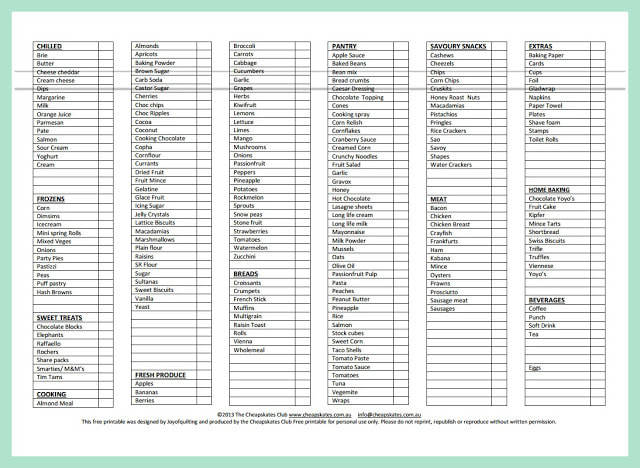
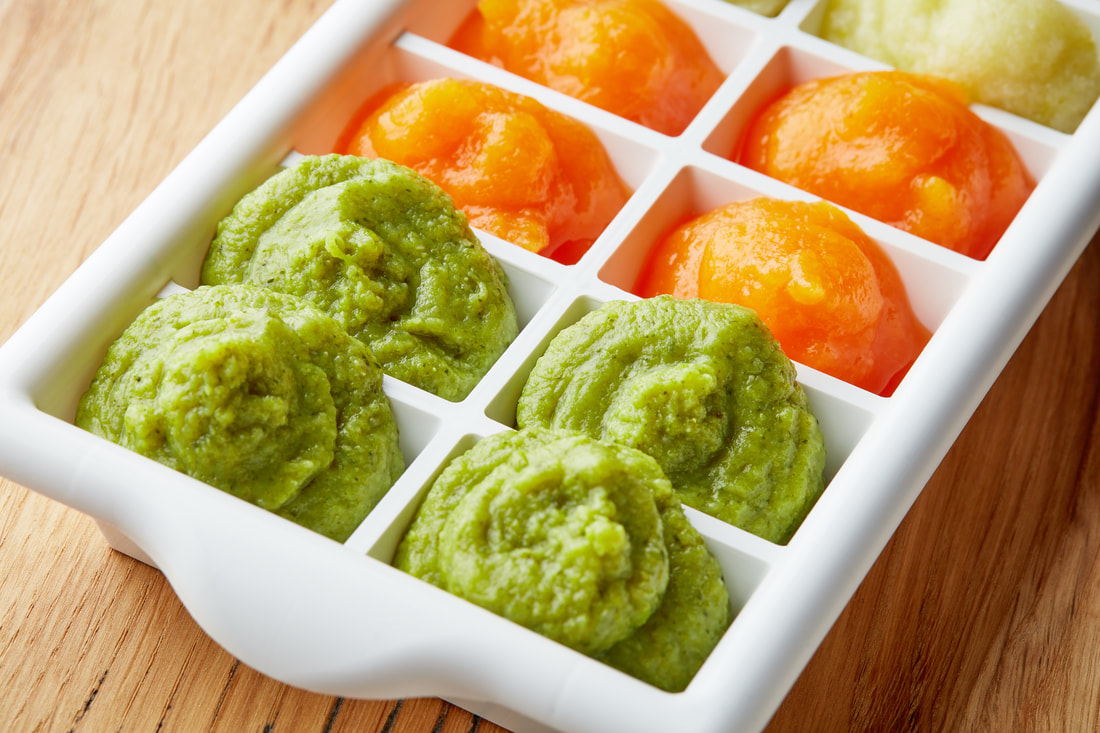

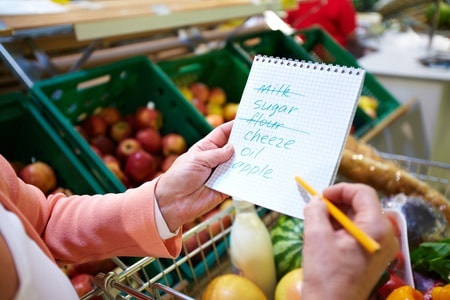
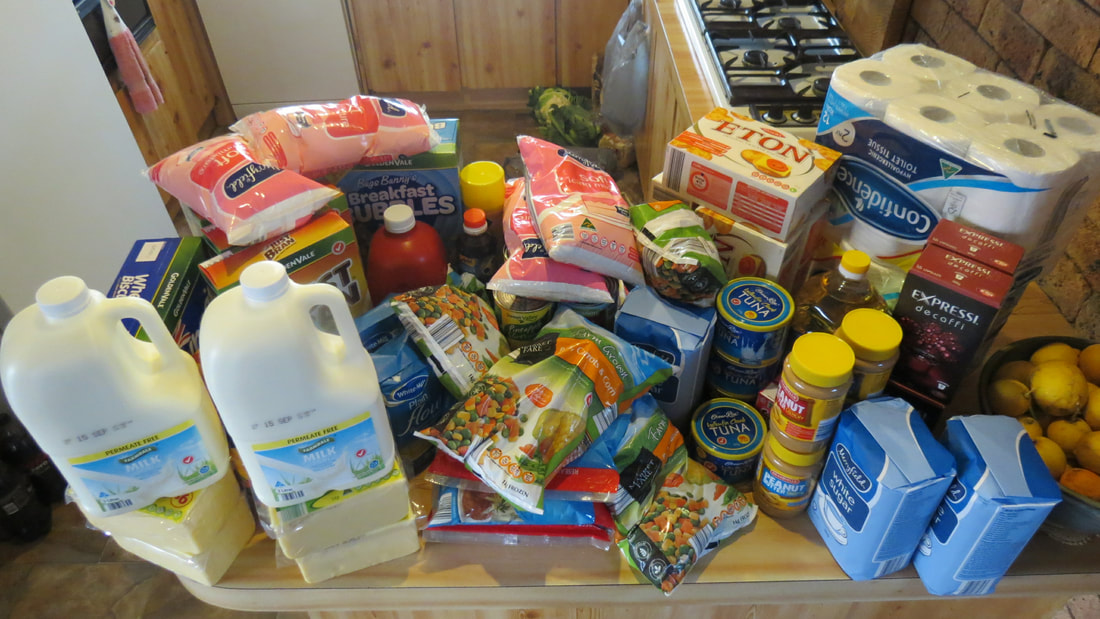
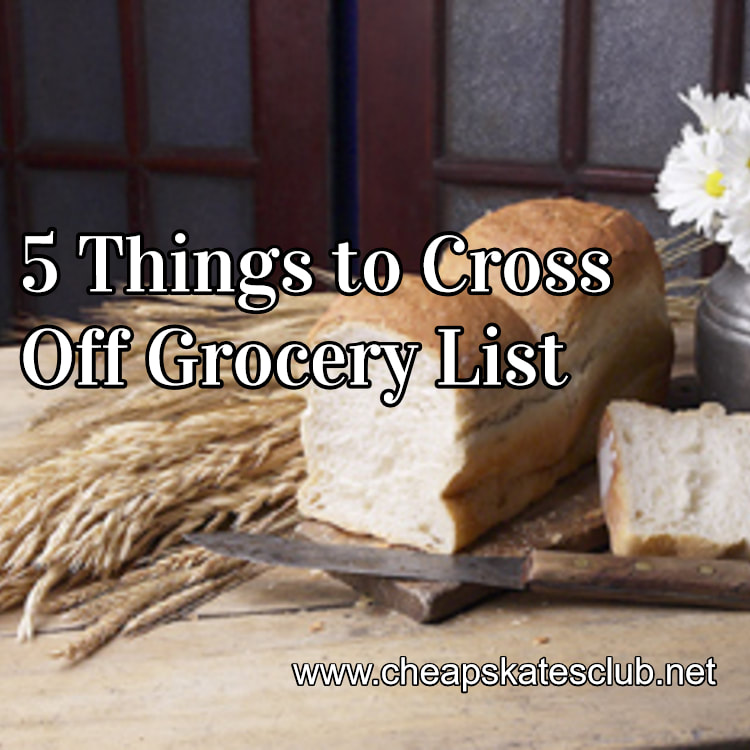
 RSS Feed
RSS Feed